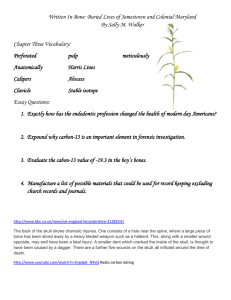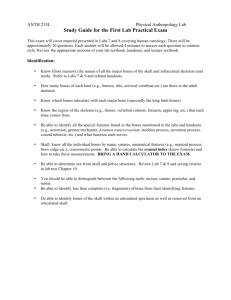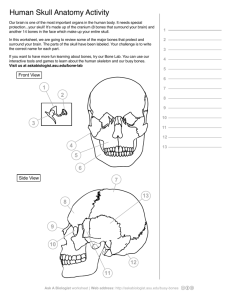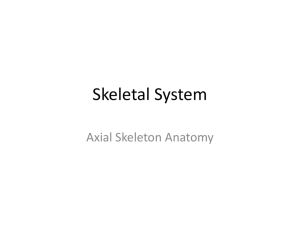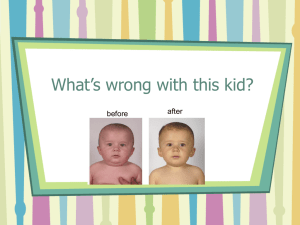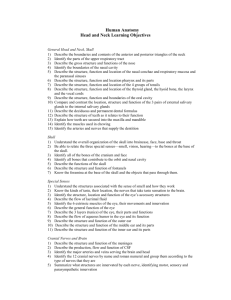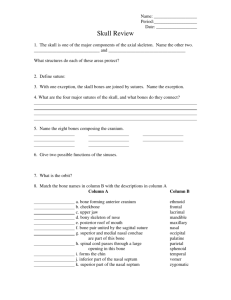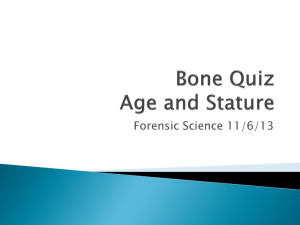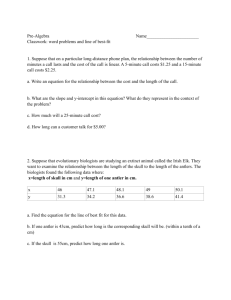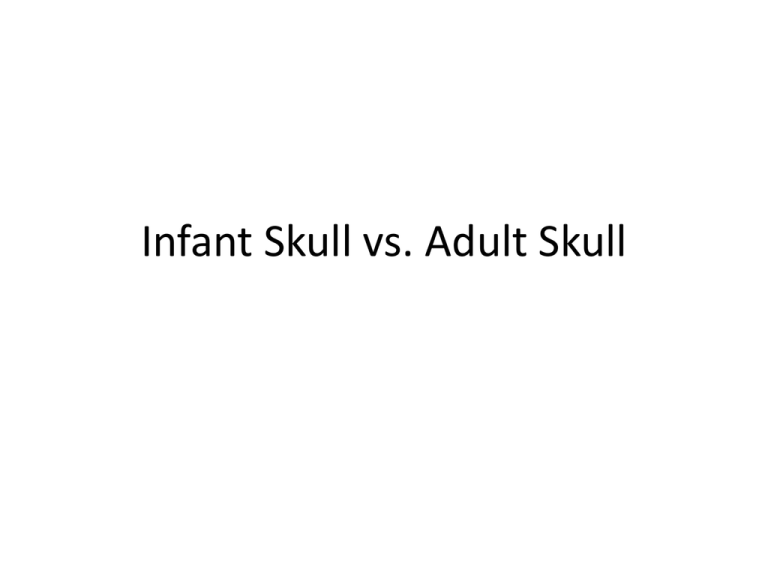
Infant Skull vs. Adult Skull
Pg. 143 Figure 7.15
• A Lateral & superior View of the infant skull
– Fontanels: fibrous membranes that permit some
movement between the bones so that the
growing skull can change shape& aid in labor
through the birth canal.
• Eventually close as the cranial bones grow together
Infant Skull Characteristics
•
•
•
•
•
•
•
Relatively small face
Prominent forehead
Large orbits
Small jaw & nasal cavity
Sinuses are incompletely formed
Frontal bone in 2 parts
Thin skull bones, somewhat flexible
– Less easily fractured than adult bones
Venn Diagram
• Draw a Venn diagram based on the differences
& similarities of an adult skull and an infant
skull.
Part 2
Also describe on your paper where the frontal
bone, occipital bone, and parietal bones are
located.

